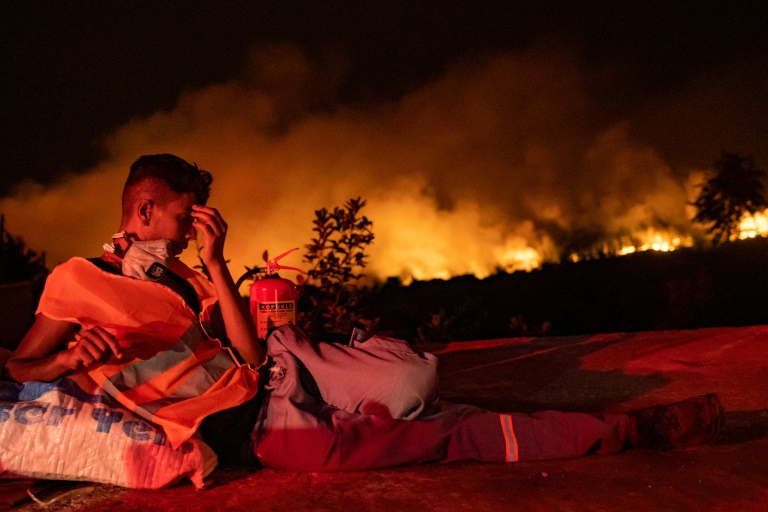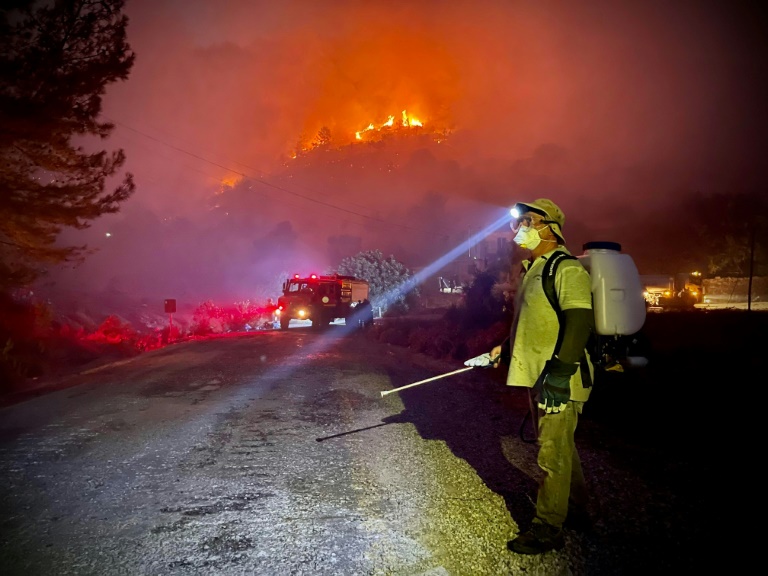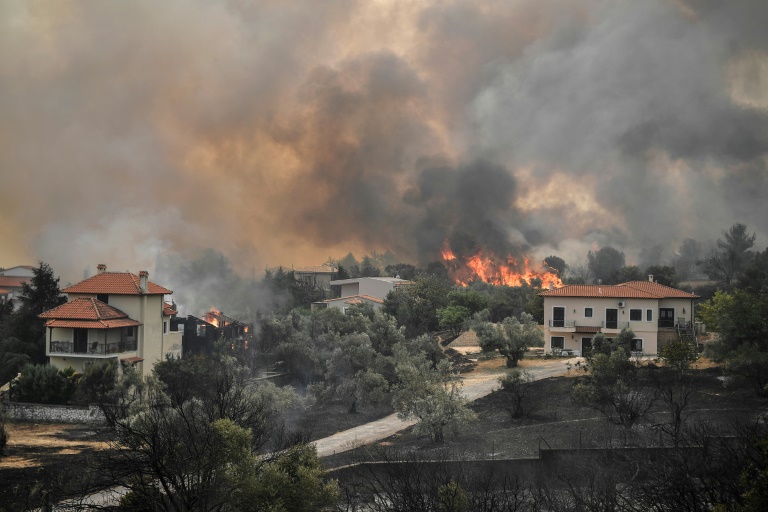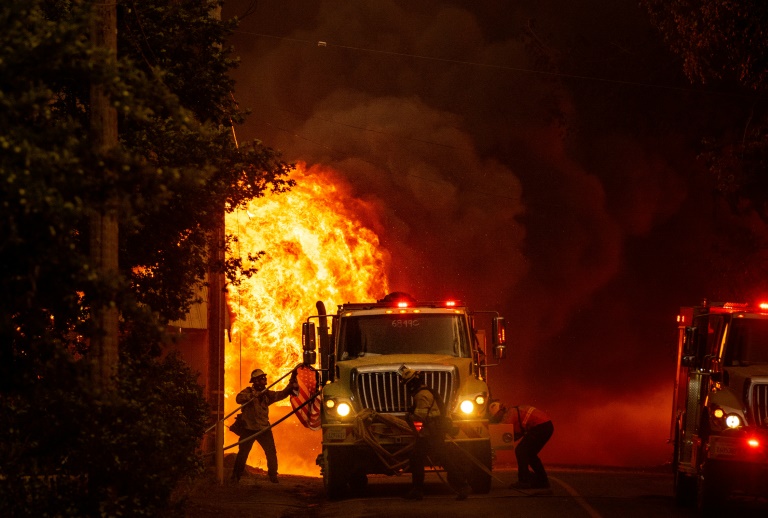Hundreds of families homeless as Greek fires rage, Turkey saved by the rain
Hundreds of firefighters fought wildfires and flare-ups that have devoured record numbers of woodlands in Greece Saturday and left hundreds of families homeless, but heavy rains brought some respite to hard-hit Turkey.
More than 1,450 Greek firefighters backed by at least 15 aircraft were battling the fires, with reinforcements arriving from other countries, the fire service said.
The blazes in Greece are set to continue, with strong winds and temperatures of up to 38 degrees C (100 F) forecast in some regions on Saturday.
This year’s fires have been far more destructive than in previous years.
In the last 10 days, 56,655 hectares (140,000 acres) have been burnt in Greece, according to the European Forest Fire Information System. The average number of hectares burnt over the same period between 2008 and 2020 was 1,700 hectares.
“When this nightmarish summer ends we will reverse the damage as soon as possible,” Prime Minister Kyriakos Mitsotakis pledged on Saturday.
In Pefkofyto, in the north of Athens, pensioner Tasos Tsilivakos struggled to contain his tears.
“This is a horrible disaster,” he told AFP.
“I’m really afraid that maybe only our great-grand children will have the chance to walk again in these areas.”
One 62-year-old man from nearby Agios Stefanos told Alpha TV how after being evacuated he had had to watch his house burning on television. “My child is still crying from the shock,” he said.
– Rains help Turkey –
Greece and Turkey have been fighting devastating fires for more than a week as the region suffers its worst heatwave in decades. Officials and experts have linked such intense weather events to climate change.
So far, they have killed two people in Greece and eight in Turkey, with dozens more hospitalised there during 10 days of the blazes.
A UN draft report seen by AFP labelled the Mediterranean region a “climate change hotspot”, warning that heatwaves, droughts and fires would become more fierce in the future, supercharged by rising temperatures.
But the weather gave Turkey some respite Saturday. Officials in the Turkish coastal city of Antalya said the blazes were under control in the southwestern province after rainfall there.
And heavy rainfall was expected to continue until the afternoon in areas including Manavgat, one of the most affected by the fires.
The situation remained serious however around the tourist hotspot of Mugla, where at least three neighbourhoods have been ordered to evacuate.
There have been over 200 fires in 47 of Turkey’s 81 provinces, Agriculture and Forestry Minister Bekir Pakdemirli tweeted early on Saturday. Thirteen fires continue in five provinces.
– Fears of more high winds –
Greek Civil Protection deputy minister, Nikos Hardalias said on Saturday that 55 blazes were raging across Greece.
They were burning on Evia, the country’s second largest island, which lies east of the capital; in the Peloponnese region in the southwest; and in Fthiotida in Central Greece.
The fire front on Evia alone ran across 30 kilometres (18 miles) long, said Fanis Spanos, regional governor of Central Greece, but in Attica peninsula there the situation was “more stable”.
There is, however, concern as winds are expected to pick up pace later in the day, the Fire Brigade said.
Part of a motorway linking Athens to the north of the country that had been shut down as a precaution was reopened Saturday.
In the northern Evia, where more than 1,300 people fled the fires on ferry boats Friday from the coastal village of Limni, another 23 were evacuated Saturday morning from a nearby beach at Rovies.
Navy warships are on high alert off the north of the island in case more evacuations are required.
Local officials there have already called for more air support in the firefighting efforts warning for hundreds of homeless families.
Fanis Spanos told the Athens News Agency (ANA) that more than 300 families whose homes had been burned down were being sheltered in hotels.
The situation remained dire in Mani, in the Peloponnese, where 5,000 people were evacuated on Friday.
Eleni Drakoulakou, the mayor of East Mani, told ERT TV on Saturday that half the town had been burnt, blaming a lack of water-dropping air support during the critical first hours of the wildfire.
ANA also reported that two people had been charged for arson.
In Athens, police arrested a woman in a park on Friday as she was carrying two lighters, petrol and flammable materials, a few minutes after a fire broke out there.
Authorities have banned visits to parks and forests through Greece.
A 43-year-old man was arrested in the area of Krioneri and charged with arson, according to ANA.







